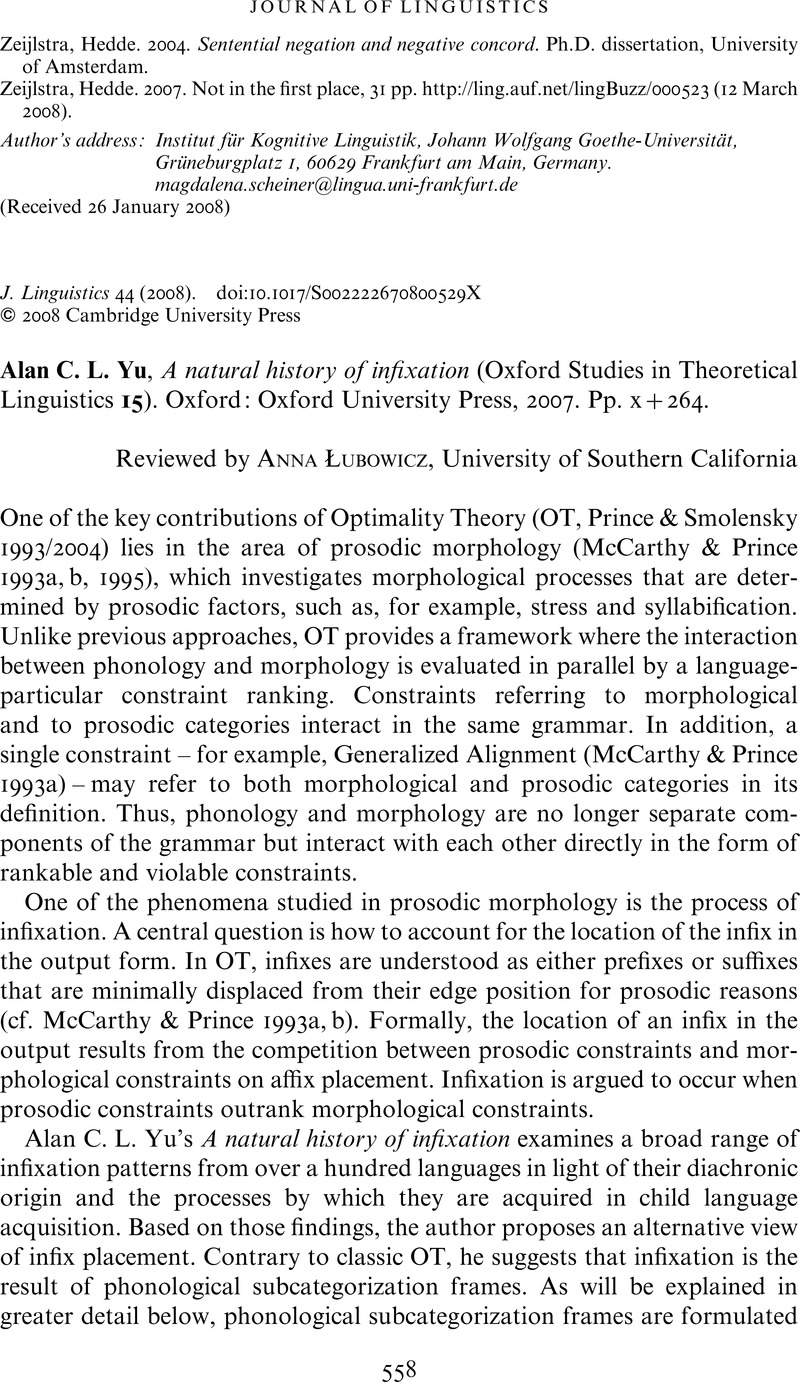No CrossRef data available.
Article contents
C. L. Alan Yu, A natural history of infixation (Oxford Studies in Theoretical Linguistics 15). Oxford: Oxford University Press, 2007. Pp. x+264.
Published online by Cambridge University Press: 19 June 2008
Abstract
An abstract is not available for this content so a preview has been provided. Please use the Get access link above for information on how to access this content.

- Type
- Reviews
- Information
- Copyright
- Copyright © 2008 Cambridge University Press
References
REFERENCES
Buckley, Eugene. 2000. Explaining Kashaya infixation. Berkeley Linguistics Society (BLS) 23, 14–25.Google Scholar
Crowhurst, Megan. 2001. Coda conditions and um infixation in Toba Batak. Lingua 111.8, 561–590.CrossRefGoogle Scholar
Łubowicz, Anna. To appear. Infixation as morpheme absorption. In Steve, Parker (ed.) Phonological argumentation: Essays on evidence and motivation. London: Equinox.Google Scholar
McCarthy, John J. & Alan, S Prince. 1993a. Generalized Alignment. In Geert, Booij & Jaap van, Marle (eds.) Yearbook of morphology 1993, 79–153. Dordrecht: Kluwer. [ROA 7-0000.]CrossRefGoogle Scholar
McCarthy, John J. & Alan, S Prince. 1993b. Prosodic morphology I: Constraint interaction and satisfaction. Technical Report #3, Rutgers University Center for Cognitive Science. [ROA 482-1201.]Google Scholar
McCarthy, John J. & Alan, S Prince. 1995. Faithfulness and reduplicative identity. Papers in Optimality Theory (University of Massachusetts Occasional Papers in Linguistics 18), 249–384. [ROA 60-0000.]Google Scholar
Orgun, Cemil Orhan. 1999. Sign-based morphology: A declarative theory of phonology–morphology interleaving. In Ben, Hermans & van Oostendorp, Marc (eds.) The derivational residue in phonological Optimality Theory, 247–267. Amsterdam & Philadelphia: John Benjamins.Google Scholar
Orgun, Cemil Orhan & Inkelas, Sharon. 2002. Reconsidering bracket erasure. In Geert, Booij & Jaap, van Marle (eds.) Yearbook of Morphology 2001, 115–146. Dordrecht: Kluwer.CrossRefGoogle Scholar
Prince, Alan S. & Smolensky, Paul. 1993/2004. Optimality Theory: Constraint interaction in generative grammar. Oxford: Blackwell. [1993 version published as Technical Report #2, Rutgers University Center for Cognitive Science.]Google Scholar




